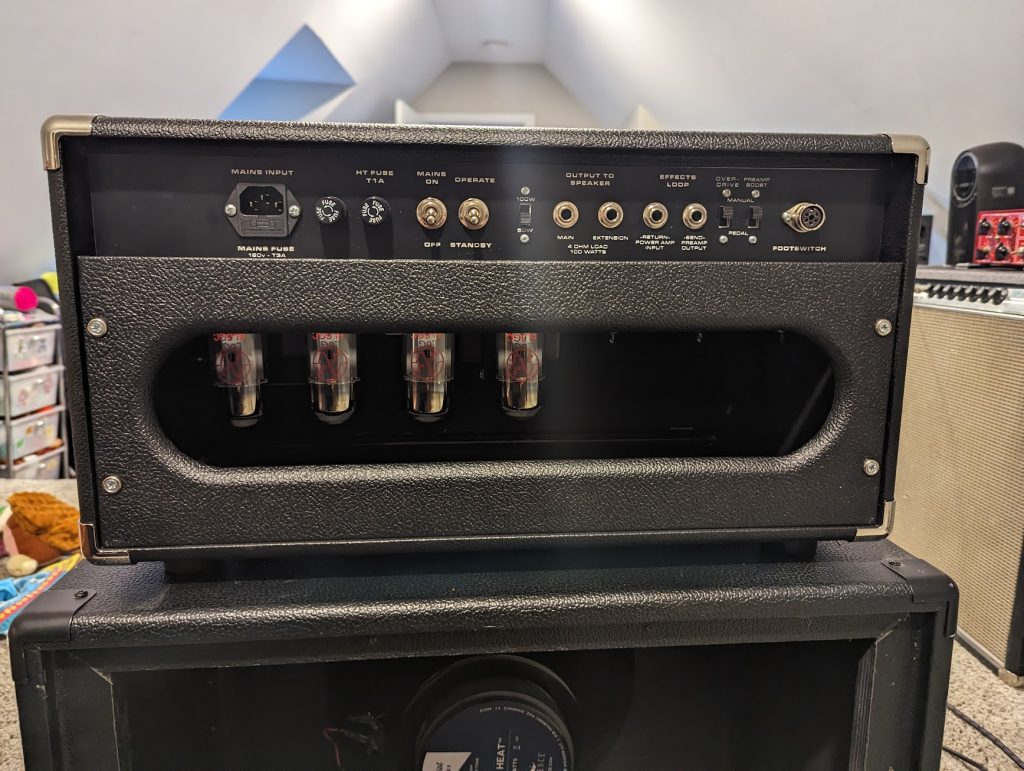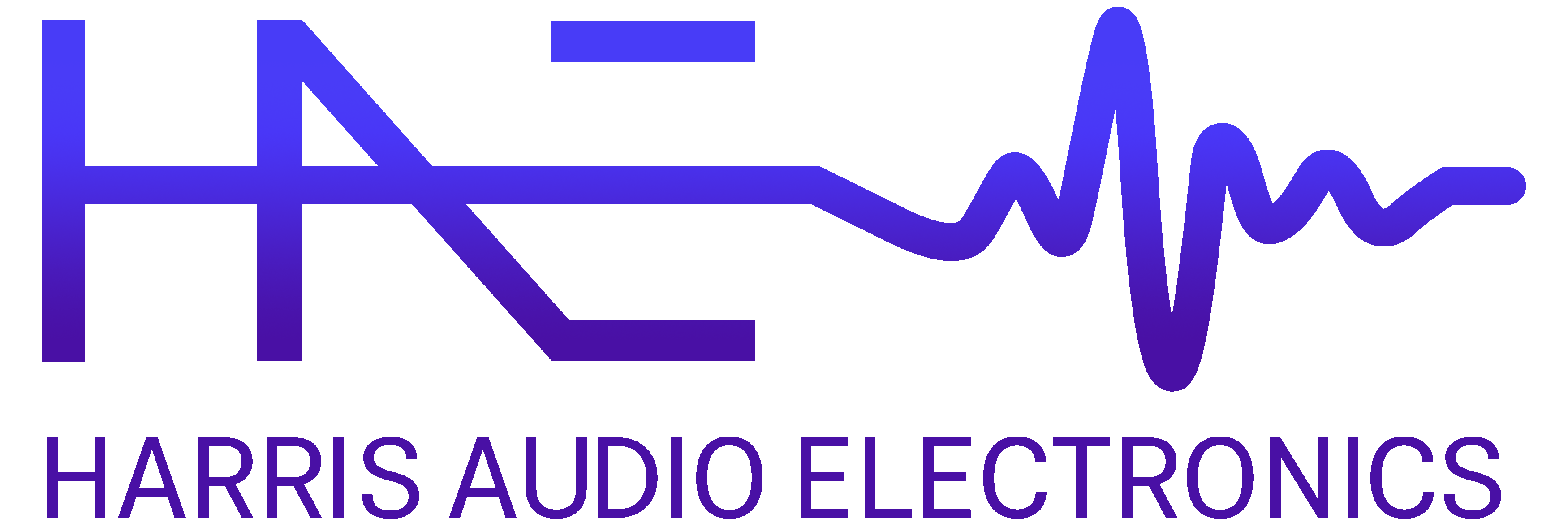Intro

Finally, the amp is complete! Since the last log, I received my head shell from Modulus. I had them design it to aesthetically match the Peavey 1×12 I’m using with it, and I think it really turned out great.
I also finished the footswitch. I reached out to Amplified Nation to ask if I could purchase a footswitch from them, since they use the same form factor plugs, and I did not want to drill my own enclosure. They were kind enough to sell me a pre-drilled enclosure and I was able to build my own for very low cost.
The Guts

The above picture is the final build, or close to it. It’s a little more rats-nest-y than I’d have liked around the power supply and tube sockets, but it’s a quiet and functional design, so I’m leaving it alone. One thing of note is that I ran B+ voltages with the blue wires on top of the board rather than under the board with every other route. I liked the idea of being able to quickly visually identify all my high voltage runs.
The only real mistake on this board after first pass build was that I landed some of the filter caps on the right side of the board in the wrong through-holes. Quick and easy fix, and it’s working great now.
The Cabinet
Modulus made a fantastic head cab to perfectly fit their chassis. They gave me some options for custom finishing, and I went with black tolex, black grill cloth, and white piping–simply to match the cab I was planning to use.
They did a wonderful job. Everything fit together perfectly and easily.


The Tones

I’m really pleased with how the amp sounds. The clean channel is very Fender-y if you want, but has a lot more mids available if you prefer. It can be a very unforgiving tone, but one that cuts through a mix extremely well.
The overdrive tone is exactly what I was hoping for. I did an A/B with my vintage Super Reverb cranked–perhaps my favorite tone on the planet–and it was impressively similar, but because the power amp isn’t being crushed to achieve that tone, it takes things like fuzz pedals a lot better.
My primary complaint is that I wish the amp had built in spring reverb. For now, I am using a Wampler Reflection in the effects loop, and it’s working great without a Dumbleator. It’s pretty much scratching the itch, but I may one day build or buy a standalone, tube-driven spring reverb unit.
I recorded a sound sample of the ODS using a Lewitt LCT 440 Pure close mic’d on the Eminence Texas Heat in the speaker cab. You’ll have to excuse the playing and lack of mixing/mastering. The rhythm guitar is the clean channel with all the preamp options off, the lead tone is the OD channel with the Deep switch on. The only effect is the reverb pedal on in the loop of the amp.
ODS Sound Sample
Conclusion
Overall, I couldn’t be much happier with this amp. I’m thrilled with how it turned out aesthetically, and I love how it sounds. This will absolutely be my main amp moving forward.

